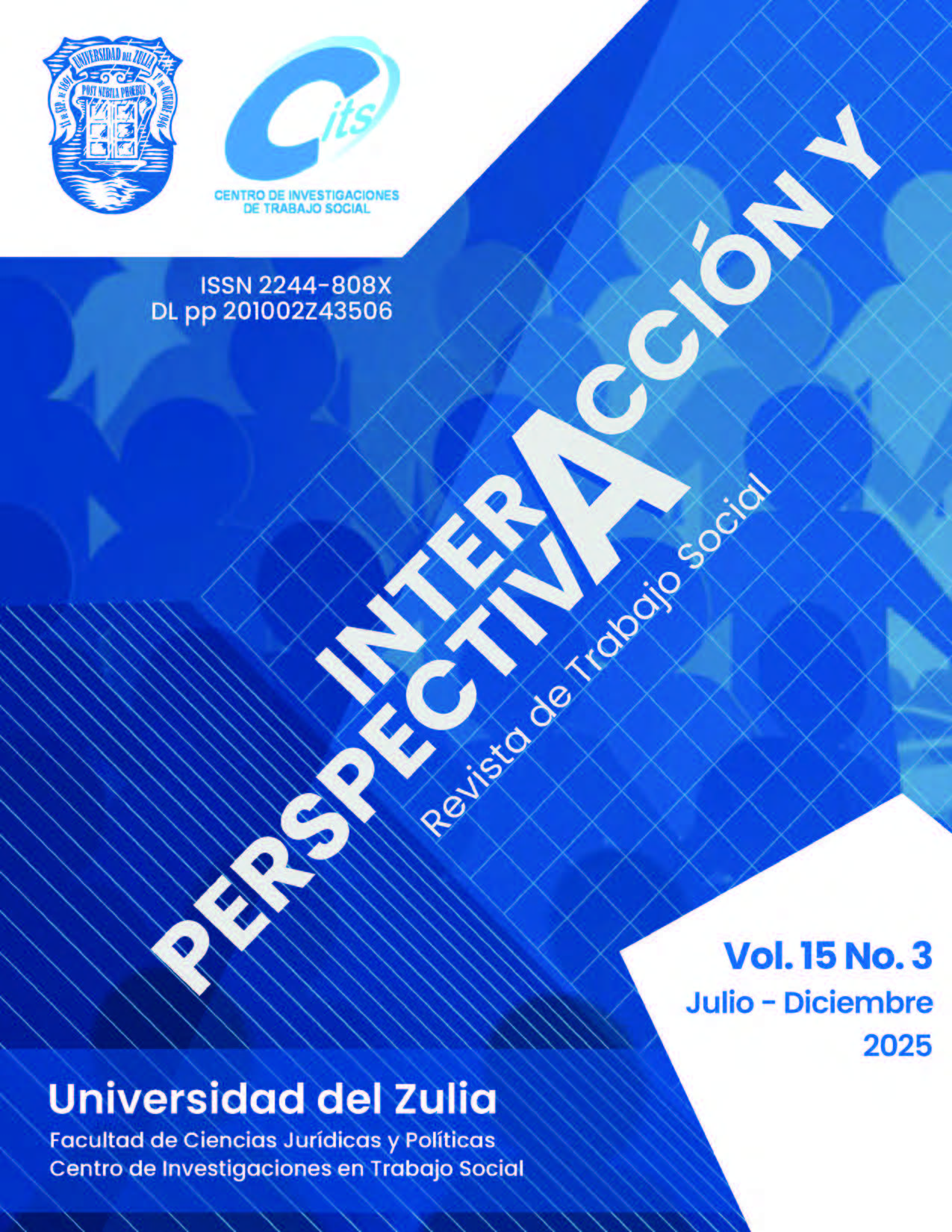Psychological well-being in students: Cultural adaptation and revision of the Ryff model
Abstract
This study presents a psychometric evaluation of Ryff’s Psychological Well-Being (PWB) scale for Chinese international students from mainland China studying in Malaysia. With a sample of 335 participants, we implemented a comprehensive analytical approach incorporating Rasch analysis, confirmatory factor analysis (CFA), and exploratory factor analysis (EFA) to assess and refine the scale’s structure. Initial Rasch modeling in a pilot sample (N = 110) identified problematic items that exhibited measurement misfit. When applying CFA to test the original six-factor model in the main study, we discovered high interfactor correlations and inadequate discriminant validity, particularly among four dimensions. Through model respecification and validation, we developed a more parsimonious three-factor solution that consolidated Environmental Mastery, Personal Growth, Purpose in Life, and Self-Acceptance into a unified construct while retaining Autonomy and Positive Relations as distinct factors. The optimized 15-item, three-factor model demonstrated excellent psychometric properties (χ²/df = 1.305, CFI = 0.995, TLI = 0.994, SRMR = 0.022, RMSEA = 0.030). These findings suggest that psychological well-being may manifest in a more integrated manner among Chinese international students from mainland China adapting to cross-cultural environments than originally theorized. This refined model offers researchers and practitioners a more culturally appropriate and psychometrically sound instrument for assessing psychological well-being in international student populations, while contributing to our understanding of how cultural context may influence the structural manifestation of psychological constructs.
Downloads
References
Bannigan, K., & Watson, R. (2009). Reliability and validity in a nutshell. Journal of clinical nursing, 18(23), 3237-3243.
Bewick, B., Koutsopoulou, G., Miles, J., Slaa, E., & Barkham, M. (2010). Changes in un dergraduate students’ psychological well‐being as they progress through university. Studies in Higher Education, 35(6), 633–645. https://doi.org/10.1080/03075070903216643
Bond, T. G., & Fox, C. M. (2013). Applying the Rasch model: Fundamental measurement in the human sciences. Psychology Press. https://doi.org/10.4324/9781410614575
Boone, W. J., Townsend, J. S., & Staver, J. (2011). Using Rasch theory to guide the practice of survey development and survey data analysis in science education and to inform science reform efforts: An exemplar utilizing STEBI self‐efficacy data. Science Education, 95(2), 258-280. https://doi.org/10.1002/sce.20413
Bremner, R. H. (2011). Theories of happiness: On the origins of happiness and our contemporary conception (Doctoral dissertation, Universitätsund Landesbibliothek Bonn).
Briggs, D. C., & Wilson, M. (2003). An introduction to multidimensional measurement using Rasch models.
Burns, R. A., & Machin, M. A. (2009). Investigating the structural validity of Ryff’s psychological well-being scales across two samples. Social indicators research, 93, 359-375.
Burris, J. L., Brechting, E. H., Salsman, J., & Carlson, C. R. (2009). Factors associated with the psychological well-being and distress of university students. Journal of American College Health, 57(5), 536–544. https://doi.org/10.3200/jach.57.5.536-544
Byrne, B. M. (2013). Structural equation modeling with Mplus: Basic concepts, applications, and programming. routledge.
Byrne, B.M. (2001). Structural equation modeling with Amos, EQS, and Lisrel: Comparative approaches to testing for the factorial validity of a measuring instrument. International Journal of Testing, 1(1), 55–86. https://doi:10.1207/s15327574ijt0101_4
Byrne, B.M. (2001). Structural equation modeling with Amos, EQS, and Lisrel: Comparative approaches to testing for the factorial validity of a measuring instrument. International Journal of Testing, 1(1), 55–86. https://doi:10.1207/s15327574ijt0101_4
Cheng, S. T., & Chan, A. C. (2005). Measuring psychological well-being in the Chi- nese. Personality and Individual Differences, 38(6), 1307-1316. https://doi.org/10.1016/j. paid.2004.08.013
Chin, W. W. (1998). The partial least squares approach to structural equation modeling. Modern methods for business research, 295(2), 295-336.
Clarke, P. J., Marshall, V. W., Ryff, C. D., & Wheaton, B. (2001). Measuring psychological well-being in the Canadian study of health and aging. International psychogeriatrics, 13(S1), 79-90. https://doi.org/10.1017/S1041610202008013 [Opens in a new window]
Cooke, D. J., & Michie, C. (1997). An item response theory analysis of the Hare Psychopathy Checklist--Revised. Psychological assessment, 9(1), 3.
Deci, E. L., & Ryan, R. M. (2008). Self-determination theory: A macrotheory of human motivation, development, and health. Canadian psychology/Psychologie canadienne, 49(3), 182. https://doi.org/10.1037/a0012801
Dongqi, S., Prabakusuma, A. S., & Manystighosa, A. (2020). An empirical study on cross-cultural adaptation of Chinese overseas students in Malaysia: Survey of Chinese students at Segi University, Malaysia. Proceedings of the Brawijaya International Conference on Multidisciplinary Sciences and Technology (BICMST 2020). https://doi.org/10.2991/assehr.k.201021.032
Ederio, N. T., P. Inocian, E., I. Calaca, N., & M. Espiritu, J. G. (2023). Ethical research practices in educational institutions: A Literature Review. International Journal of Current Science Research and Review, 06(05). https://doi.org/10.47191/ijcsrr/v6-i5-02
Ederio, N. T., P. Inocian, E., I. Calaca, N., & M. Espiritu, J. G. (2023). Ethical research practices in educational institutions: A Literature Review. International Journal of Current Science Research and Review, 06(05). https://doi.org/10.47191/ijcsrr/v6-i5-02
Erikson, E. (1959). Theory of identity development. E. Erikson, Identity and the life cycle. Nueva York: International Universities Press. Obtenido de http://childdevpsychology. yolasite. com/resources/theory% 20of% 20ident ity% 20erikson.pdf.
Felzmann, H. (2009). Ethical issues in school-based research. Research Ethics, 5(3), 104–109. https://doi.org/10.1177/174701610900500304
Felzmann, H. (2009). Ethical issues in school-based research. Research Ethics, 5(3), 104–109. https://doi-org.ezproxy.utm.my/10.1177/174701610900500304
Fernandes, H. M., Vasconcelos-Raposo, J., & Teixeira, C. M. (2010). Preliminary analysis of the psychometric properties of Ryff’s scales of psychological well-being in Portuguese adolescents. the Spanish Journal of psychology, 13(2), 1032-1043.
Fornell, C., & Larcker, D. F. (1981). Evaluating structural equation models with unobservable variables and measurement error. Journal of marketing research, 18(1), 39-50.
Frances, M. Y., & Solon, T. K. (2014). Item response theory for measurement validity. Shanghai archives of Psychiatry, 26(3), 171. https://doi.org/10.3969/j.issn.1002-0829.2014.03.010
Gan, G. G., & Yuen Ling, H. (2019). Anxiety, depression and quality of life of medical students in Malaysia. Med J Malaysia, 74(1), 57-61.
Gould, A. (1994). The issue of measurement validity in health-care research. British Journal of Therapy and Rehabilitation, 1(2), 99–103. https://doi.org/10.12968/bjtr.1994.1.2.99
Gustems-Carnicer, Jose, Calderón, C., & Calderón-Garrido, D. (2019). Stress, coping strategies and academic achievement in teacher education students. European Journal of Teacher Education, 42(3), 375–390. https://doi.org/10.1080/02619768.2019.1576629
Hair, J. F. (2011). Multivariate data analysis: An overview. International encyclopedia of statistical science, 904-907. https://doi.org/10.1007/978-3-642-04898-2_395
Hair, J.F.J., Black, W. C., Babin, B.J., & Anderson, R.E. (2019). Multivariate Data
Haji-Othman, Y., & Yusuff, M. S. S. (2022). Assessing reliability and validity of attitude construct using partial least squares structural equation modeling. Int J Acad Res Bus Soc Sci, 12(5), 378-385. http://dx.doi.org/10.6007/IJARBSS/v12-i5/13289
Henn, C. M., Hill, C., & Jorgensen, L. I. (2016). An investigation into the factor structure of the Ryff Scales of Psychological Well-Being. SA Journal of Industrial Psychology, 42(1), 1-12. https://doi.org/10.4102/sajip.v42i1.1275
Henseler, J., Ringle, C. M., & Sarstedt, M. (2015). A new criterion for assessing discriminant validity in variance-based structural equation modeling. Journal of the academy of marketing science, 43, 115-135.
Huppert, F. A. (2009). Psychological well‐being: Evidence regarding its causes and consequences. Applied psychology: health and well‐being, 1(2), 137-164. https://doi.org/10.1111/j.1758-0854.2009.01008.x
Huta, V., & Waterman, A. S. (2014). Eudaimonia and its distinction from hedonia: Developing a classification and terminology for understanding conceptual and operational definitions. Journal of happiness studies, 15, 1425-1456.
Jager, J., Putnick, D. L., & Bornstein, M. H. (2017). II. More than just convenient: The scientific merits of homogeneous convenience samples. Monographs of the society for research in child development, 82(2), 13-30. http://onlinelibrary.wiley.com/doi/10.1111/mono.v82.2/issuetoc
Jahoda, M. (1958). Current concepts of positive mental health. Basic Books. https://doi.org/10.1037/11258-000
Jung, C. G. (2001). Modern Man in Search of a Soul. London: Routledge. https://doi.org/10.4324/9781003059479
Kafka, G. J., & Kozma, A. (2002). The construct validity of Ryff’s scales of psychological well- being (SPWB) and their relationship to measures of subjective well-being. Social Indicators Research, 57, 171-190.
Kafka, G. J., & Kozma, A. (2002). The construct validity of Ryff’s scales of psychological well- being (SPWB) and their relationship to measures of subjective well-being. Social Indicators Research, 57, 171-190.
Kállay, É., & Rus, C. (2014). Psychometric properties of the 44-item version of Ryff’s Psy- chological Well-Being Scale. European Journal of Psychological Assessment. https://doi.org/10.1027/1015-5759/a000163
Keyes, C. L. (2002). The Mental Health Continuum: From languishing to flourishing in life. Journal of Health and Social Behavior, 43(2), 207. https://doi.org/10.2307/3090197
Kitamura, T., Kishida, Y., Gatayama, R., Matsuoka, T., Miura, S., & Yamabe, K. (2004). Ryff’s psychological well-being inventory: factorial structure and life history correlates among Japanese university students. Psychological Reports, 94(1), 83-103. https://doi-org.ezproxy.utm.my/10.2466/pr0.94.1.83-103
Koyuncu, M. S., & Şata, M. (2023). Using ACER ConQuest program to examine multidimensional and many-facet models. International journal of assessment tools in education, 10(2), 279-302.
Lee, T. S. H., Sun, H. F., & Chiang, H. H. (2019). Development and validation of the short- form Ryff’s psychological well-being scale for clinical nurses in Taiwan. Journal of Medical Sciences, 39(4), 157-162.
Levin, K. A. (2006). Study design III: Cross-sectional studies. Evidence-based dentistry, 7(1), 24-25.
Linacre, J. M. (1999). Understanding Rasch measurement: estimation methods for Rasch measures. Journal of outcome measurement, 3, 382-405.
Lindfors, P., Berntsson, L., & Lundberg, U. (2006). Factor structure of Ryff’s psychological well-being scales in Swedish female and male white-collar workers. Personality and individual differences, 40(6), 1213-1222. https://doi.org/10.1016/j.paid.2005.10.016
Luthans, F., Youssef, C. M., & Avolio, B. J. (2007). Psychological capital: Investing and developing positive organizational behavior. Positive Organizational Behavior, 9–24. https://doi.org/10.4135/9781446212752.n2
Ma, L. (2022). An Introduction to The Acer Conquest Software for Item Response Analyses. Evaluation Studies in Social Sciences, 3(2), 47-61.
Mahalanobis, P. C. (2018). On the generalized distance in statistics. Sankhyā: The Indian Journal of Statistics, Series A (2008), 80, S1-S7. https://www.jstor.org/stable/48723335
Mohajan, H. K. (2017). Two criteria for good measurements in research: Validity and Reliability. Annals of Spiru Haret University. Economic Series, 17(4), 59–82. https://doi.org/10.26458/1746
Nemati, S., Gargari, R. B., Vahedi, S., & Mirkazempour, M. H. (2023). Mindfulness-based resilience training on the psychological well-being of medical students during the COVID-19 pandemic. Research and Development in Medical Education, 12(1), 1-1. https://doi. org/10.34172/rdme.2023.33099
Neugarten, B. L. (1973). Personality change in late life: A developmental perspective. The Psychology of Adult Development and Aging, 311–335. American Psychological Association. https://doi.org/10.1037/10044-012
Pedaprolu, R., Yashavanth, B. S., & Rao, R. V. S. (2021). Personality and Well-Being Traits of Agricultural Scientists: Assessment, Correlations, and Prediction. Journal of Organisation & Human Behaviour, 10(3), 9-21.
Reuning, K., & Plutzer, E. (2020, September). Valid vs. invalid straightlining: The complex relationship between straightlining and data quality. In Survey Research Methods (Vol. 14, No. 5, pp. 439-459). https://doi.org/10.18148/srm/2020.v14i5.7641
Rogers, C. R. (1957). The necessary and sufficient conditions of therapeutic personality change. Journal of Consulting Psychology, 21(2), 95–103. https://doi.org/10.1037/h0045357
Rui, Z., & Wahab, N. A. (2022). The Challenges and Academic Adaptations among Ningxia China Students Studying in Malaysia. Sciences, 12(4), 1302-1313.
Ruini, C., Ottolini, F., Rafanelli, C., Ryff, C., & Fava, G. A. (2003). La validazione italiana delle Psychological Well-being Scales (PWB). Rivista di psichiatria.
Ryan, R. M., & Deci, E. L. (2001). On happiness and human potentials: A review of research on hedonic and eudaimonic well-being. Annual Review of Psychology, 52(1), 141–166. https:// doi.org/10.1146/annurev.psych.52.1.141
Ryff, C. D. (1989). Happiness is everything, or is it? explorations on the meaning of psychological well-being. Journal of Personality and Social Psychology, 57(6), 1069–1081. https://doi. org/10.1037/0022-3514.57.6.1069
Ryff, C. D., & Keyes, C. L. (1995). The structure of psychological well-being revisited. Journal of Personality and Social Psychology, 69(4), 719–727. https://doi.org/10.1037/0022- 3514.69.4.719
Sarstedt, M., Ringle, C. M., & Hair, J. F. (2021). Partial least squares structural equation modeling. In Handbook of market research (pp. 587-632). Cham: Springer International Publishing.
Schermelleh-Engel, K., Moosbrugger, H., & Müller, H. (2003). Evaluating the fit of structural equation models: Tests of significance and descriptive goodness-of-fit measures. Methods of psychological research online, 8(2), 23-74.
Sefidi, F. A. T. E. M. E. H., & Farzad, V. (2012). Validated measure of Ryff psychological well- being among students of Qazvin University of Medical Sciences (2009). Journal of Inflammatory Diseases, 16(1), 65-71.
Shafaei, A., Abd Razak, N., & Nejati, M. (2016). Integrating two cultures successfully: Factors influencing acculturation attitude of international postgraduate students in Malaysia. Journal of Research in International Education, 15(2), 137–154. https://doi. org/10.1177/1475240916653566
Sil, A., & Das, N. (2017). Informed consent process: Foundation of the researcher–participant bond. Indian Journal of Dermatology, 62(4), 380. https://doi.org/10.4103/ijd.ijd_272_17
Sirigatti, S., Stefanile, C., Giannetti, E., Iani, L., Penzo, I., & Mazzeschi, A. (2009). Assessment of factor structure of Ryff’s Psychological Well-Being Scales in Italian adolescents. Bollettino di Psicologia Applicata, 259(56), 30-50.
Sng, B., Yip, C., & Han, N. L. (2016). Legal and ethical issues in research. Indian Journal of Anaesthesia, 60(9), 684. https://doi.org/10.4103/0019-5049.190627
Sondergeld, T. A., & Johnson, C. C. (2014). Using Rasch measurement for the development and use of affective assessments in science education research. Science Education, 98(4), 581- 613. https://doi.org/10.1002/sce.21118
Springer, K. W., & Hauser, R. M. (2006). An assessment of the construct validity of Ryff’s scales of psychological well-being: Method, mode, and measurement effects. Social science research, 35(4), 1080-1102. https://doi.org/10.1016/j.ssresearch.2005.07.004
Van Dierendonck, D. (2004). The construct validity of Ryff’s Scales of Psychological Well- being and its extension with spiritual well-being. Personality and individual differences, 36(3), 629-643. https://doi.org/10.1016/S0191-8869(03)00122-3
Van Dierendonck, D., Díaz, D., Rodríguez-Carvajal, R., Blanco, A., & Moreno-Jiménez, B. (2008). Ryff’s six-factor model of psychological well-being, a Spanish exploration. Social Indicators Research, 87, 473-479.
Vandenberg, R. J., & Lance, C. E. (2000). A review and synthesis of the measurement invariance literature: Suggestions, practices, and recommendations for organizational research. Organizational research methods, 3(1), 4-70. https://doi-org.ezproxy.utm.my/10.1177/109442810031002
Villar, F., Triadó, C., Celdrán, M., & Solé, C. (2010). Measuring well-being among Spanish older adults: Development of a simplified version of Ryff’s Scales of Psychological Well-Being. Psychological Reports, 107(1), 265-280. https://doi-org.ezproxy.utm.my/10.2466/02.07.08.10.21.PR0.107.4.265-28
Voitenko, E. (2022). Occupational Well-Being: A Comparative Analysis of the Main Structural Models. International Journal of Behavior Studies in Organizations, 7, 30-39. https://doi. org/10.32038/JBSO.2022.07.03
Whittaker, T. A., & Schumacker, R. E. (2022). A beginner’s guide to structural equation modeling. Routledge.
Wright, B., & Masters, G. (1982). Rating scale analysis. Measurement and Statistics.
Zhou, Y., Jindal-Snape, D., Topping, K., & Todman, J. (2008). Theoretical models of culture shock and adaptation in international students in higher education. Studies in higher education, 33(1), 63-75. https://doi-org.ezproxy.utm.my/10.1080/03075070701794833

















